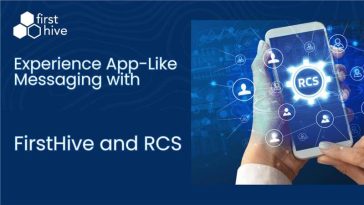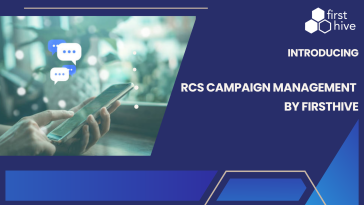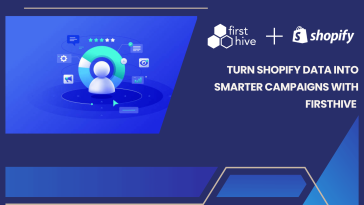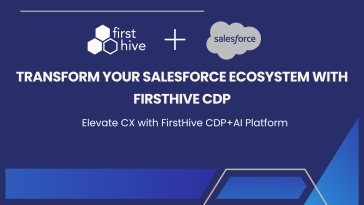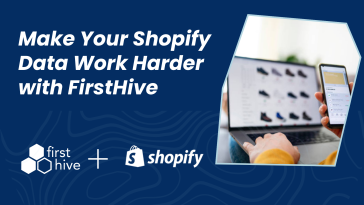When considering the integration of a Customer Data Platform into your current Martech stack, a fundamental aspect is understanding how it collaborates with it’s existing components. The CDP functions as a central system of intelligence, serving as the nexus where raw customer data converges. It seamlessly ingests data from various sources, organizes it coherently, and then channels back valuable customer insights into pertinent systems for effective activations.
This orchestration ensures that the CDP not only enhances the capabilities of individual tools but also acts as a unifying force, harmonizing the entire Martech ecosystem for optimal performance and impactful customer engagement
Here is how a CDP will function with few other key elements of your Martech stack that may already be in use:
- MMH: CDP’s robust data integration and ingestion capabilities elevate an MMH, empowering brands to establish a holistic “Single Customer View” across the customer lifecycle. This integration enhances analytics, enabling more meaningful customer engagement, improved segmentation, and the delivery of relevant recommendations. By leveraging a CDP, the MMH’s performance is optimized as enriched data is fed back into the system, resulting in more effective campaign activations.
- DMP: CDP enhances DMP capabilities by providing a unified and enriched customer profile. Unlike a standalone DMP, a CDP integrates diverse data sources, allowing for a more comprehensive understanding of customer behavior and preferences. This enriched data empowers the DMP to create highly targeted and personalized audience segments. The synergy between CDP and DMP results in improved audience insights, more effective ad targeting, and ultimately, enhanced advertising performance.
- CRM: While a CRM function exits more towards the bottom of the funnel, A CDP contributes to enhancing the deliverability to the overall Martech stack. CRMs aid the creation of customer identities but they don’t create them on their own. CDP not only creates customer identity by ingesting and tracking every known and anonymous customer interaction but also enables real-time updates and a holistic view of customer profile.
- Data Warehouse: CDP enhances the capabilities of a data warehouse by providing a dynamic and real-time approach to customer data management. Unlike traditional data warehouses that focus on storing historical data, CDP integrates diverse and continuously updated customer information. This integration ensures that the data warehouse is fueled with the latest insights from various channels, allowing businesses to make informed decisions based on the most recent customer behaviors and preferences. CDP’s contribution to a data warehouse results in a more agile and responsive system, better suited for today’s fast-paced and data-driven marketing landscape.
- Data Lake: CDPs and data lakes, while both capable of hosting customer data, differ significantly. IT-managed data lakes ingest enterprise-wide data without altering its structure, providing a persistent store. Conversely, marketer-managed CDPs unify first and third-party data, facilitating real-time data flow for enhanced targeting and customer experiences. CDPs foster alignment between revenue teams and IT within an enterprise’s data ecosystem. Revenue teams leverage CDPs to drive business growth, while IT benefits from the harmonious collaboration of CDPs and data lakes, collectively serving the business’s needs.
- Loyalty Program: CDP significantly elevates the functionality of loyalty programs by providing a comprehensive understanding of customer behavior and preferences. Leveraging this information, personalized loyalty programs can be designed to cater to the specific needs and preferences of each customer segment. With the ability to engage customers through various channels, such as email, SMS, and mobile apps, CDP ensures that loyalty programs are not only targeted but also seamlessly integrated into the customer journey. Real-time tracking of customer interactions allows for continuous optimization of loyalty programs, resulting in increased customer retention and brand advocacy.
Learn More: https://firsthive.com/loyalty-marketing/
In conclusion, the integration of a Customer Data Platform (CDP) with other key components of your Martech stack is a transformative journey toward unparalleled customer engagement and business growth. The CDP, functioning as the central intelligence hub, seamlessly connects raw customer data from various sources and channels back invaluable insights into the Martech ecosystem for effective activations.
Explore our detailed guides and comparisons to unlock the full potential of CDPs in transforming each component of your Martech stack. Elevate your business strategies and customer engagement with the strategic implementation of CDP technology.
Access the complete guides and resources mentioned above to stay ahead in the game:
Guide on Multi-channel Marketing Hub with a CDP
Importance of CDP for Marketers
Is it CDP or Data Lake, or both?
Connect with us for a future-ready strategy, empowered by the unparalleled capabilities of FirstHive CDP.
Download the below Infographic




